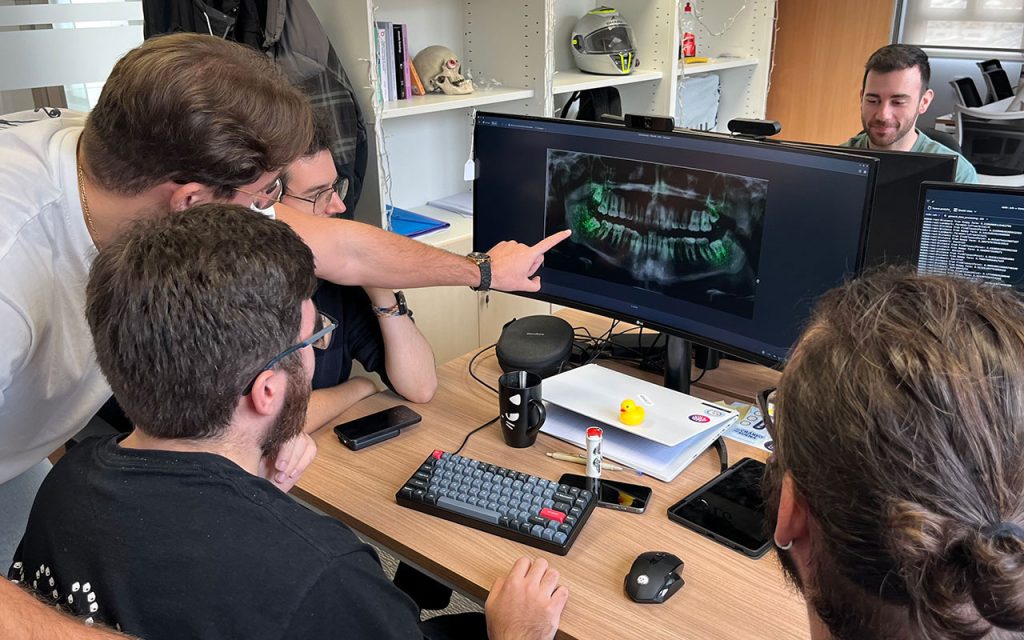
HUMAN IDENTIFICATION
Legal Age Estimation of Minors
PRODUCT
One of the greatest challenges faced at borders worldwide is determining the legal age of minors. In this context, there is a critical need for objective, accurate, and reproducible methodologies to ensure a reliable process that respects the rights of minors.
As part of an EU project, Panacea has developed a robust, AI-based method to estimate the legal age of minors and assist forensic experts in their decision-making process. This method leverages orthopantomographies (panoramic dental X-rays) to provide precise and reliable age estimations.
VIDEOS
OTHER REFERENCES
SCIENTIFIC PUBLICATIONS
J. Venema, S. De Luca, P. Mesejo, O. Ibáñez. Trustworthy AI-based legal age estimation using orthopantomographs. Submitted to Engineering Applications of Artificial Intelligence in 21/10/2024.
Práxedes Martínez, Andrea Valsecchi, Javier Irurita, Pablo Mesejo. Information fusion for subadult age estimation from deciduous teeth using machine learning techniques. American Journal of Biological Anthropology, e24912. https://doi.org/10.1002/ajpa.24912
A. Demirjian, H. Goldstein, y J. M. Tanner, «A New System of Dental Age Assessment», Hum. Biol., vol. 45, n.o 2, pp. 211-227, 1973.
R. Cameriere, L. Ferrante, y M. Cingolani, «Age estimation in children by measurement of open apices in teeth», Int. J. Legal Med., vol. 120, n.o 1, pp. 49-52, ene. 2006, doi: 10.1007/s00414-005-0047-9 .
H. H. Mincer, E. F. Harris, y H. E. Berryman, «The A.B.F.O. study of third molar development and its use as an estimator of chronological age», J. Forensic Sci., vol. 38, n.o 2, pp. 379-390, mar. 1993.
A. Uys, H. Bernitz, S. Pretorius, y M. Steyn, «Estimating age and the probability of being at least 18 years of age using third molars: a comparison between Black and White individuals living in South Africa», Int. J. Legal Med., vol. 132, n.o 5, pp. 1437-1446, sep. 2018, doi: 10.1007/s00414-018-1877-6.
D. L. S et al., «Accuracy of Cameriere’s cut-off value for third molar in assessing 18 years of age», Forensic Sci. Int., vol. 235, feb. 2014, doi: 10.1016/j.forsciint.2013.10.036.
M. Melo, F. Ata-Ali, J. Ata-Ali, J. M. Martinez Gonzalez, y T. Cobo, «Demirjian and Cameriere methods for age estimation in a Spanish sample of 1386 living subjects», Sci. Rep., vol. 12, n.o 1, p. 2838, feb. 2022, doi: 10.1038/s41598-022-06917-x.
J. Albernaz Neves et al., «Validation of the Third Molar Maturation Index (I3M) to assess the legal adult age in the Portuguese population», Sci. Rep., vol. 10, n.o 1, p. 18466, oct. 2020, doi: 10.1038/s41598-020-75324-x.
N. Angelakopoulos et al., «Comparison of the third molar maturity index (I3M) between left and right lower third molars to assess the age of majority: a multi-ethnic study sample», Int. J. Legal Med., vol. 135, n.o 6, pp. 2423-2436, nov. 2021, doi: 10.1007/s00414-021-02656-2.
F. De Micco, F. Martino, L. A. Velandia Palacio, M. Cingolani, y C. P. Campobasso, «Third molar maturity index and legal age in different ethnic populations: Accuracy of Cameriere’s method», Med. Sci. Law, vol. 61, n.o 1_suppl, pp. 105-112, ene. 2021, doi: 10.1177/0025802419900686.
M. Sundararajan, A. Taly, y Q. Yan, «Axiomatic attribution for deep networks», en International conference on machine learning, PMLR, 2017, pp. 3319-3328. Accedido: 18 de diciembre de 2023. [En línea]. Disponible en: http://proceedings.mlr.press/v70/sundararajan17a.html